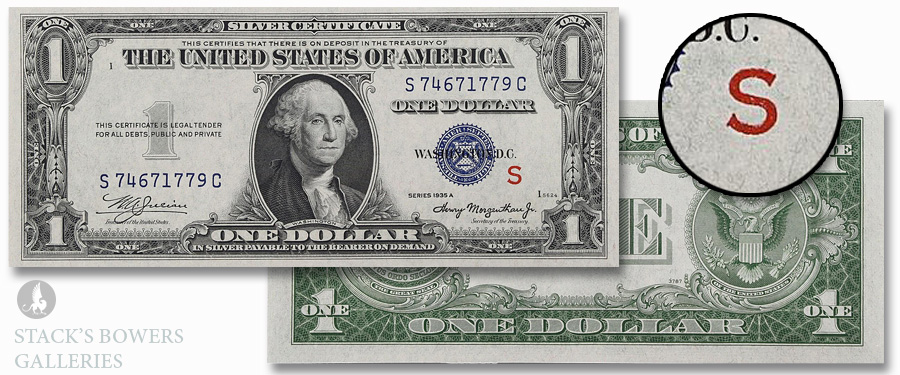
One of the most common items we see over-the-counter at the Boston Gallery is small-size $1 Silver Certificates from the series years of 1928, 1934, 1935, and 1957. Usually these notes are sufficiently tattered, worn, or otherwise rag-like and hold little to no numismatic premium over their face value. Occasionally, though, we are presented with a small-size $1 Silver Certificate with a minute but important design distinction: a large red “R” or “S” in the lower right corner beside the blue Treasury seal. Concerned about the declining supply of security paper and the resilience of paper money in circulation in the late 1930s and early-to-mid 1940s, the U.S. Bureau of Engraving and Printing concocted an experiment to gauge the durability of their product. In 1944, 2,368,000 notes from the 1935A series were produced; half of them were printed on regular paper and distinguished with a large red “R” and half were printed on special paper bearing a large red “S.” Unfortunately for the BEP, nothing conclusive was observed from this experiment as it proved difficult to keep track of how the respective groups wore over time. Despite being a failed attempt, the small production run and smaller surviving population of these notes guarantees their collectability.
In choice condition, survivors range in value from several hundred to a few thousand dollars and are thus highly desirable to collectors and dealers. In our August Global Showcase Auction, we offered the highest graded example of the “S” experimental note (Fr. 1610). This premium piece, graded Superb Gem Unc 68 PPQ by PCGS Banknote, sold for $3,360. These scarce notes have special meaning to the numismatists at Stack’s Bowers Galleries in Boston, as a pair of “R” and “S” experimental silver certificates were among the first items we purchased at the New England location.





